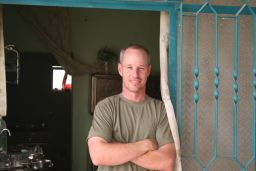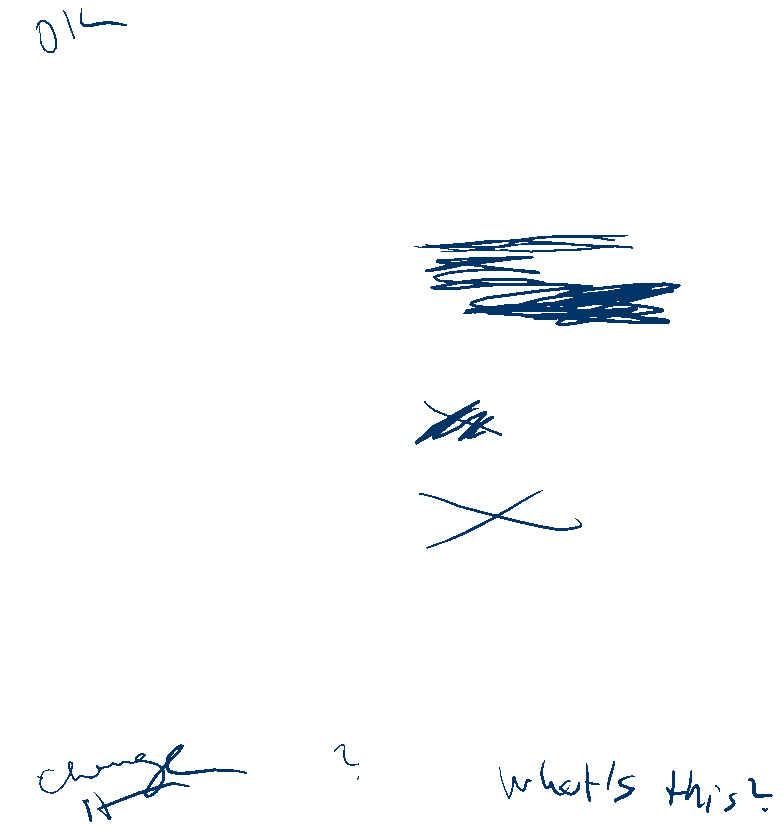Editor’s Note: David J. Morris is a former Marine infantry officer and the author of “The Evil Hours: A Biography of PTSD.” He teaches writing at the University of Nevada, Las Vegas. The views expressed here are those of the author. Read more opinion on CNN.
Like most Americans, I watched the January 6 Capitol insurrection on television with a tortured mix of horror, disgust and awe. As a former Marine officer, my disgust grew, then eventually boiled over as I noticed that mingling in the throngs of malignant supposed super-patriots and frothing conspiracy junkies were serious-looking guys outfitted in tactical gear, wearing unit patches and insignia that I recognized.

Undoubtedly, I told myself, most of these insurrectionists were merely, as one vet friend put it to me “Navy SEAL cosplayers,” and couch potato combat enthusiasts who staged paintball wars on the weekends, but whatever hope I’d had evaporated like a rain puddle in a Laredo parking lot when NPR reported last week that nearly 1 in 5 of the people charged in the insurrection by the FBI were middle-aged military veterans, i.e. guys like me.
The attack on the Capitol is an event that will be investigated and parsed for years to come, not to mention jousted-over during Trump’s second impeachment trial in the Senate set to begin next week. As a history nerd, one of the first things that jumped out at me was how much the insurrection resembled Mussolini’s 1922 March on Rome. As I wrote the following day in an email to a professor friend: “A charismatic, outsider politician incites a march on the Capitol but declines to participate. Check. Disillusioned veterans in military paraphernalia advancing on government buildings claiming to be ‘patriots.’ Check. Cynical politicians finding common cause with the insurrections for their own gain. Check.”
Now, to be fair, it is all too easy to misuse history in times like this and it’s important to remember that Mussolini’s March on Rome differs from the January 6 putsch in a number of important ways: first among them is the fact that Mussolini’s march actually worked. He eventually took control of the Italian government as a result of the march that he incited, whereas Trump’s attempt to disrupt the transfer of power failed and the violence he and his allies incited will likely lead to a number of criminal indictments; Trump now also has the dubious distinction of being the only president to be impeached twice.
Like so many things about the Trump era, the presence of veterans among the rioters was both shocking and not really surprising. I’d seen a lot of white nationalism during my eight years in uniform; it essentially bookended my military career. The ROTC unit I joined at Texas A&M was known as the “Rebel Company” that featured a caricature of a Confederate soldier on its unit crest. My last year on active duty was spent working at the 1st Marine Division Scout Sniper school, where there was a long history of Marines unofficially using the Nazi SS logo – a logo that many snipers ridiculously claimed stood only for “Scout Sniper.”
Apparently, my experience wasn’t unique. According to the Military Times, more than one-third of active-duty troops said that they have personally experienced some form of racist or white supremacist behavior. People in power may now be ready to heed the scope of the problem. On Wednesday, Secretary of Defense Lloyd Austin ordered a stand down for the entire US military force so that “each service, each command” could have “needed discussions” about extremism in the military. He took this action after meeting with all of the service secretaries and service chiefs.
Like the Republican Party, the US military has for years coddled, looked the other way, winked at, joked about and generally not taken white nationalism seriously enough in its ranks for a very long time. Sometimes this takes the form of turning a blind eye towards the misguided behavior, or as in one 2012 case, officially claiming that members of a Marine sniper platoon caught openly displaying a Nazi SS flag in a unit photograph, “didn’t realize that they were associating themselves with something that was racist, fascist.” (None of the Marines were disciplined.)
Other times there is an air of “boys will be boys” impatience. Part of this less than robust response, no doubt, is related to the fact that the military draws a lot of recruits from red states where rock-ribbed conservatism and gun ownership are part of the culture and flying the Confederate flag is often looked upon as an colorful lifestyle choice, rather than a racist display.
When these same people exit the military and find themselves adrift, lacking in marketable job skills, lacking purpose and a sense of belonging, they are easy prey for violent extremist groups like the Oath Keepers and the Boogaloo Boys who actively recruit veterans.
To the average American, all of this may come as a bit of a shock. The fact is that our current all-volunteer military has more than a smattering of proto-fascists in it, people for whom Trump’s rhetoric deeply resonates, people prone to look upon civilians as decadent, weak and corrupted by liberal culture. I know this because I used to think that civilians were weak, fat and corrupted by liberal culture. I know this because some of these proto-fascists were my bosses and buddies.
Shortly after I reported in to my first Marine unit at Camp Pendleton, a fellow infantry officer confessed to me that he “hated all civilians” and thought that homosexuals “should be exterminated.” In 2020, during a heated discussion over the Corps’ new policy prohibiting the display of White supremacist symbols on base, one veteran on a Facebook group page for former Marines tried to downplay the appearance of swastikas at recent protests as “a few years of misuse” by explaining that “it’s been a symbol of positivity for thousands of years.”
The foremost symbol of a regime that started the deadliest conflict in European history and engineered the deaths of six millions Jews. A few years of misuse. Right. And Charles Manson was a struggling musician.
Part of this culture of ignorance is, no doubt, not strictly the fault of the military but instead the inevitable product of a flailing education system and what Gore Vidal called the “United States of Amnesia.” But the other half of the problem of violent, traitorous veterans is related to what is often misidentified by civilians as post-traumatic stress disorder.
Put simply, history is replete with examples of veterans who came home, found peacetime life empty and meaningless and become involved in radical political groups as a way to relieve their boredom or escape the seeming mediocrity of their post-military lives. The list of veterans who returned home and went on to become right wing militants is long and bloody: Timothy McVeigh, Terry Nichols, Randy Weaver, Louis Beam, Nathan Damigo, Filippo Marinetti and Gabrielle D’Annunzio.
As Robert O. Paxton, a leading historian of fascism, aptly points out, radicalized-veteran violence also isn’t just the Right’s problem. It’s a common phenomenon in the history of post-war homecoming and recurring trope in the literature of war. “The Odyssey,” after all, ends with Odysseus murdering over a hundred stateside suitors who were circling his wife Penelope.
As Gerald Nicosia recounts in his 2001 book on the anti-Vietnam War movement, “Home To War,” former Marine Ron Kovic and others in the movement openly talked about their violent fantasies with Kovic going “so far as to buy a trunkload of automatic rifles with which to storm the White House.” Nicosia goes on to speculate that “such fantasies might have been a part of their PTSD symptomatology.” Siegfried Sassoon, the noted World War I poet and socialist, wrote his grim 1918 poem “Fight to a Finish,” which describes the end of a London victory parade thus:
Snapping their bayonets on to charge the mob,
Grim Fusiliers broke ranks with glint of steel,
At last the boys had found a cushy job.
I heard the Yellow-Pressmen grunt and squeal;
And with my trusty bombers turned and went
To clear those Junkers out of Parliament.
The important difference between Kovic’s time and our own is that Kovic lived in a pre-internet, pre-cable news America, an America dominated by a bellicose, paranoid president in Richard Nixon, who – flawed as he was – didn’t stoke the fires of insurrection.
Get our free weekly newsletter
Still, even if we could somehow un-invent the internet, if the history of post-war readjustment tells us anything, it’s that hating civilians and feeling disillusioned about post-war life is a time-honored tradition, as characteristic as the salute. As Paul Fussell, himself a World War II veteran, wrote in “The Great War and Modern Memory,” “The visiting of violent and if possible painful death upon the complacent, patriotic, uncomprehending, fatuous civilians at home was a favorite fantasy indulged by the troops.”
Wars always come home – and often in ways no one saw coming. Sometimes the war comes home in the form of veterans suffering from PTSD, but sometimes these same veterans come home alienated and mistrusting of mainstream society in a way that is easily exploited by demagogues like Trump. As historian Kathleen Belew explains in her 2018 book “Bring The War Home: The White Power Movement and Paramilitary America,” “War is not neatly contained in the space and time legitimated by the state. It reverberates in other terrains and lasts long past armistice. It comes home in ways bloody and unexpected.”







